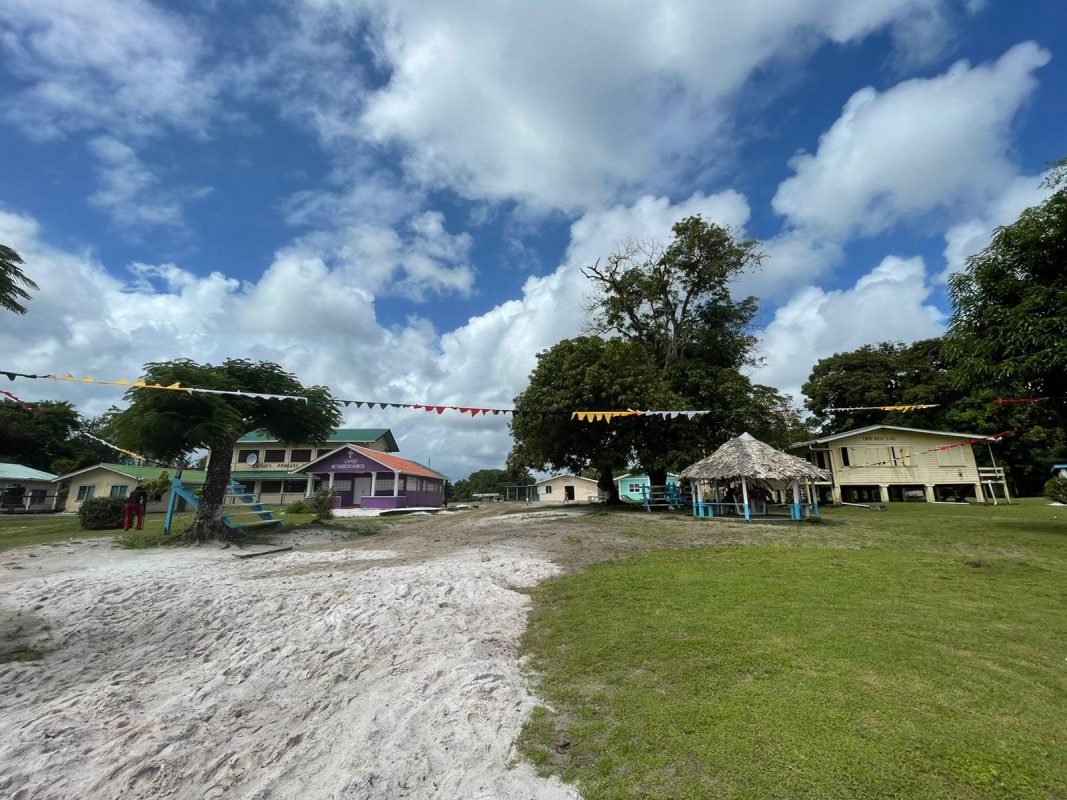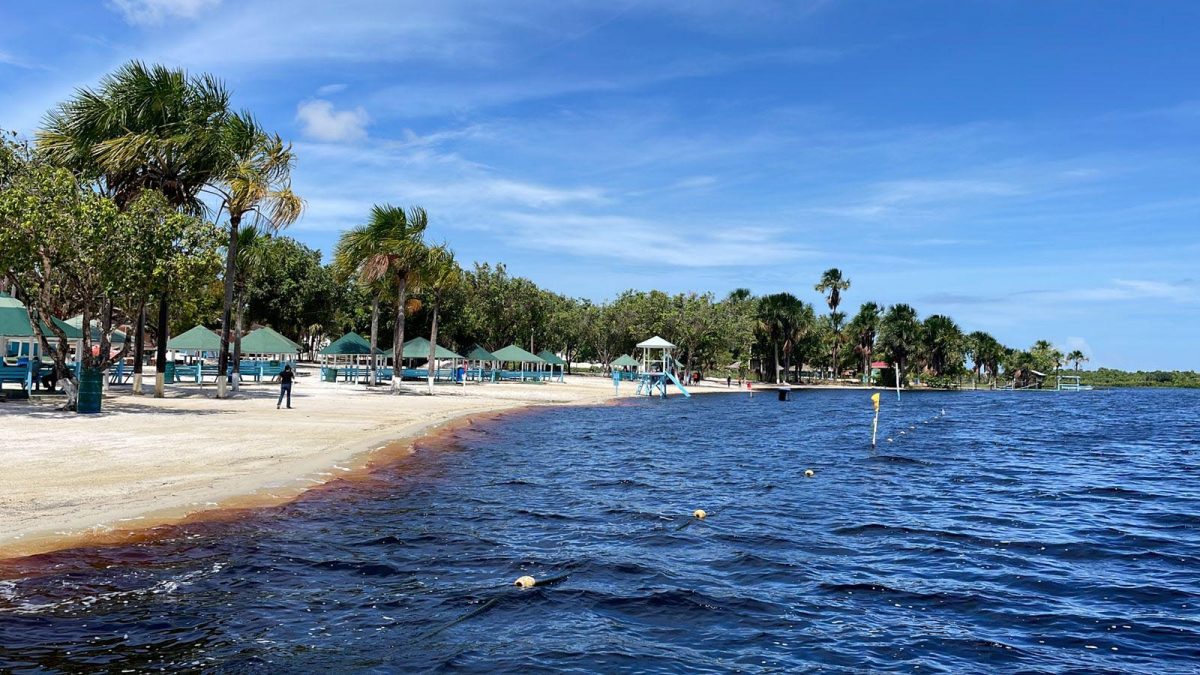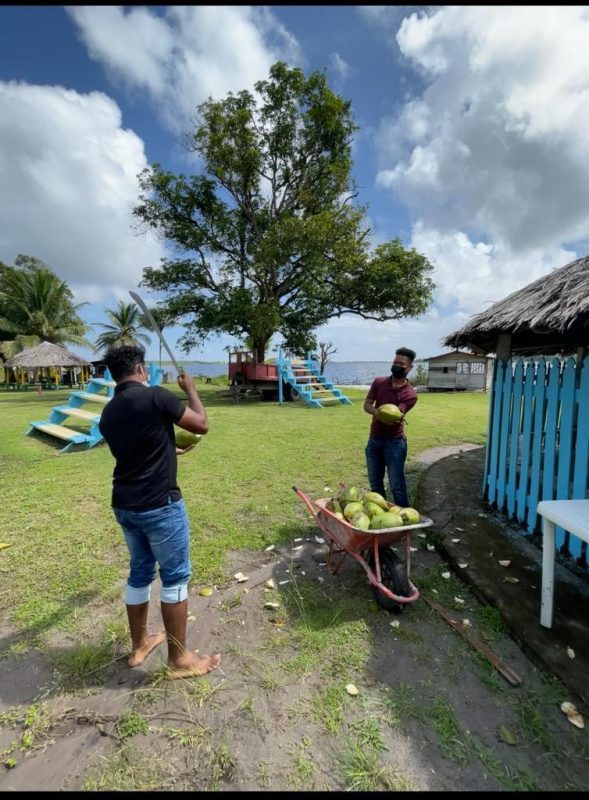For miles, acres of rice fields and farmland greet the main access road along the Essequibo Coast, serving as testament that the region is an agricultural powerhouse. Generations have thrived off of the lands and continue to do so despite the challenges posed by market access and, more recently, climate change. However, with natural wonders beyond the farmland, the region is looking to become a powerhouse of a different kind—tourism.
Regional Chairperson Vilma De Silva is among those pushing for the region to be developed as the country’s next eco-and agro-tourism destination. “We are known as an agricultural region. We are famous for rice and coconuts from the Pomeroon River. But we have room for improvement in our local economy and tourism is one way we can improve that,” De Silva told Sunday Stabroek.
“What they have in their communities is unique food, culture and experience. Tourists come to experience that. We have lakes and open spaces and beautiful villages for people to experience so tourism has tremendous benefits and falls in line [with] our main objective [of] economy building,” De Silva added.
She already has the support of central government.
Minister of Tourism, Industry and Commerce Oneidge Walrond explained that government is committed to developing and marketing Essequibo as a tourism destination.
The government, she noted, will be investing in infrastructure and assisting communities to develop accommodations to standards visitors will be comfortable with. The ministry has been working along with the ministries of Public Works and Amerindian Affairs to develop roads and provide funding to develop amenities in the villages. “We are, across the country, helping to build Guyana’s tourism product. When people see value, they spend money… and we are adding to the community… the fact that we are diverse, it is a selling point,” she added.
Tourism is nothing new to the region as it is already being done on a small scale, with established businesses reaping the benefits. The region is home to the popular Lake Mainstay Resort on the coast and up and nature lovers’ getaway Adel’s Resort on the Pomeroon River.
During her meetings with Toshaos of the 10 indigenous communities in the region, De Silva said she has been encouraging them to partner and develop their villages as a tourism spot.
Using her life story as a successful farmer, who went out and sought opportunities, she has been preaching to village councils to do the same.
Already heeding to her advice is the village council of Capoey, which is home to one of the largest lakes in the Essequibo Coast. It is working to develop the community as a tourism hotspot. Apart from its beaches along the lake, the community boasts a rainforest trail and a waterfalls.
Plans are already underway for the construction of cabins and other accommodations to host visitors. Currently, the village is open to day tours.
Miles away another indigenous community, Tapakuma, is also being scoped out to be developed as a tourism hotspot.
Toshao Aubrey Fredericks recently told reporters during a familarisation tour organised as a part of Tourism Month activities that the community has potential to become a sport fishing destination due to the presence of a lake in the village. Apart from that, the village is rich with flora and fauna and offers the experience of a simple life.
“We believe in our village that we have tourism potential but we are at a stage where we need much development and would like to seek help from our government,” Fredericks explained as he related that work began to develop the village as a tourism destination but due to financial constraints the village council was forced to halt plans.
Walrond noted that these potential tourism sites are now in demand due to the pandemic.
She also thinks that with its massive open air spaces, Guyana is well positioned to attract nature-loving tourists.
“There is a lot to sell and say about Region Two that is great for tourism…It’s one of the most pristine and cleanest places. It just looks and feels relaxing. With its vast expanse of land and very hospitable people. It’s not just the indigenous experience; the food is also excellent,” Walrond pointed out.
Looking for experiences
Moreover, De Silva said she has embarked on developing her farm into an agro-tourism spot and by next year she is hoping to have it opened to the public. This, she said, has been a project she and her family have been working on before she took up the position to be the Chairperson of the region.
However, it is now an area she has been educating farmers along the Pomeroon River about in hopes of getting them interested as she has recognised its potential to add to their pockets.
A trailblazer in the region’s coconut production sector, De Silva said the county already has the necessary infrastructure to facilitate a booming agro-tourism sector.
She said the sector, which is the new frontier of the economy, presents a win-win situation for tourists and farmers.
“We are looking at value-added. A system where tourists can come and visit your farm, pick fruits whether it be water coconut, mangoes, oranges or whatever. They come and eat and pay for what they take. Many persons are looking for experiences and some right in Guyana have never have the opportunity to pick a mango straight from the tree. That is the experience we want to create,” she enthusiastically explained.
She noted that with the farms designed to support the needs of an agro processing industry, they will also have a ready market to supply what was reaped.
Referred to as the “coconut lady” in the county, De Silva said that the idea to explore agro-tourism was birthed from many of her relatives and friends wanting to visit her farm when they are vacationing here.
“Before I became Regional Chair, I had 37 acres of farmlands and I encouraged my family to join me. So we planted these exotic fruits, like mangoes, avocadoes, sapodilla and coconuts… we had the farm laid out so it will be easy to harvest and easy for people to walk through,” she added.
The setup is also close to her coconut water bottling operation, which will be an added experience for potential tourists.
Walrond pointed out that this market is not new to Guyana as it already exists in the Rupununi in the form of cattle ranching.
With the region being an agricultural powerhouse, she said the ministry is working to develop the product and will soon begin marketing it.
“We want to scale it up here to a stage where you can come on the farm, pick fresh oranges, squeeze it and have it as a part of your breakfast or come and enjoy coconut products for the very farms you visited. We are encouraging farmers to position themselves for this. Most farmers live there and have rooms, so people can come and have that farm life experience,” she related.
Acting Director of the Guyana Tourism Authority, Kamrul Baksh, said that his agency is working with local communities to develop their tourism potential.
Making reference to the Tapakuma Lake, he said an officer will soon visit and conduct an assessment of the site’s potential.
He noted that the area has a niche of being a premier spot for sports and recreational fishing—activities which have been in demand both locally and internationally.
“We want to explore the possibility of adding it to the sustainable tourism project. From what I can see, it has potential for sports fishing. That is something that has been growing on the international tourism scene and we want capitalise on that,” he noted.









